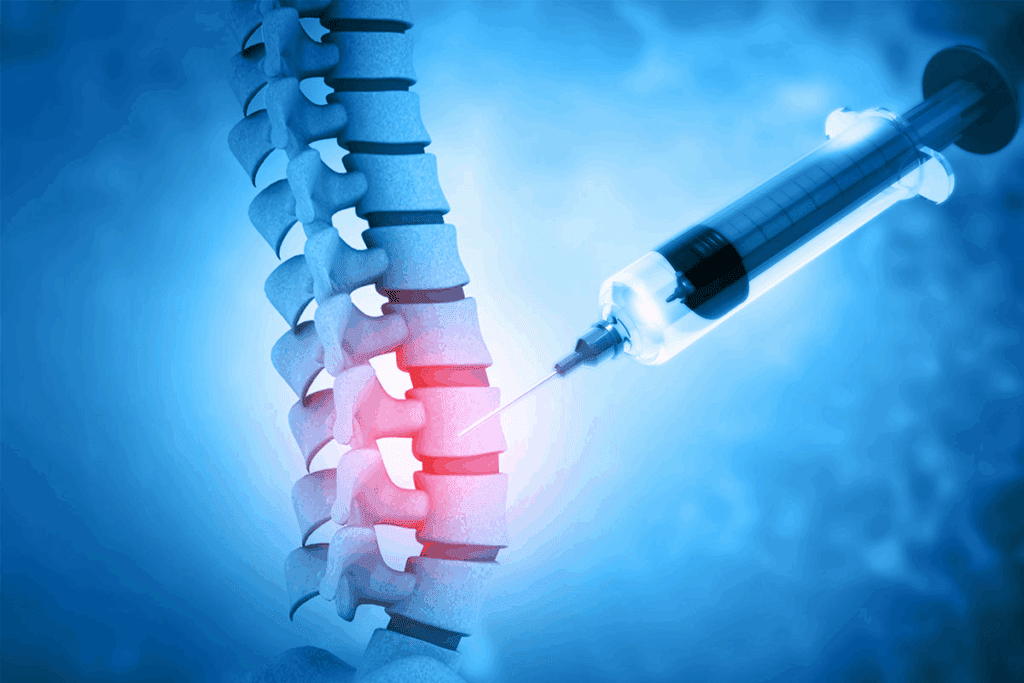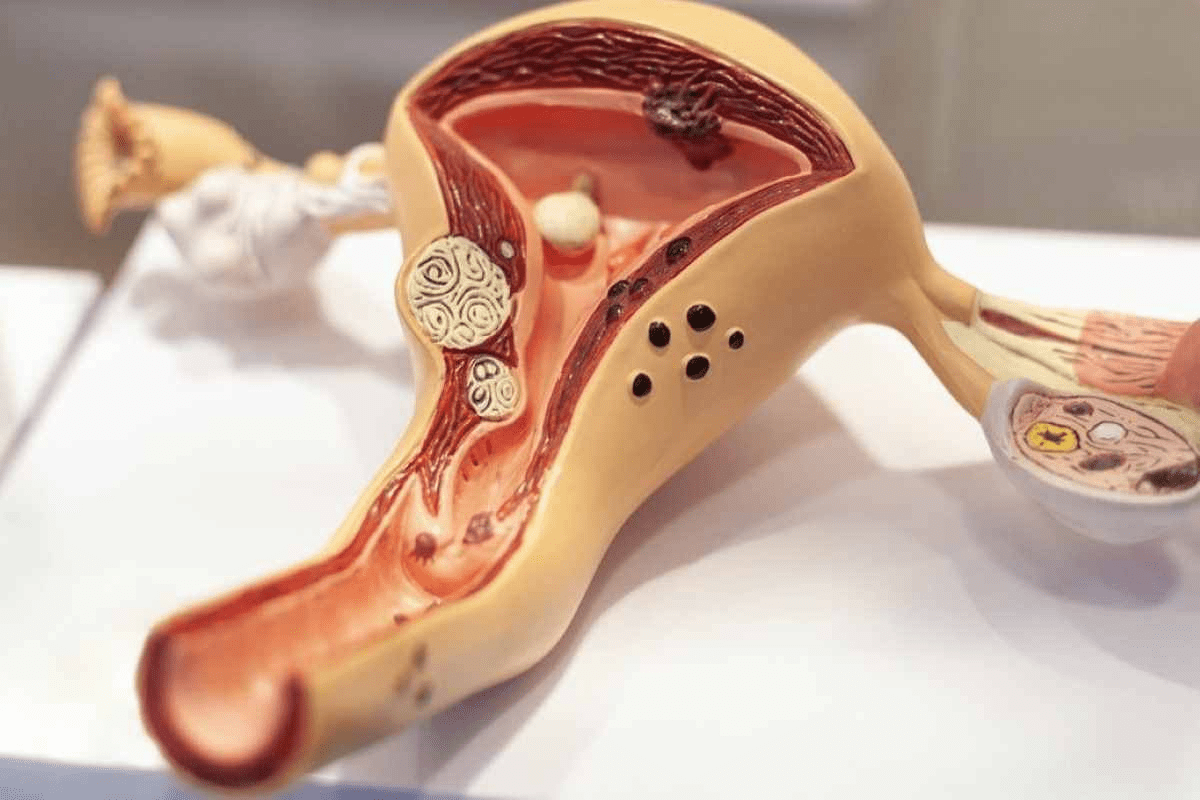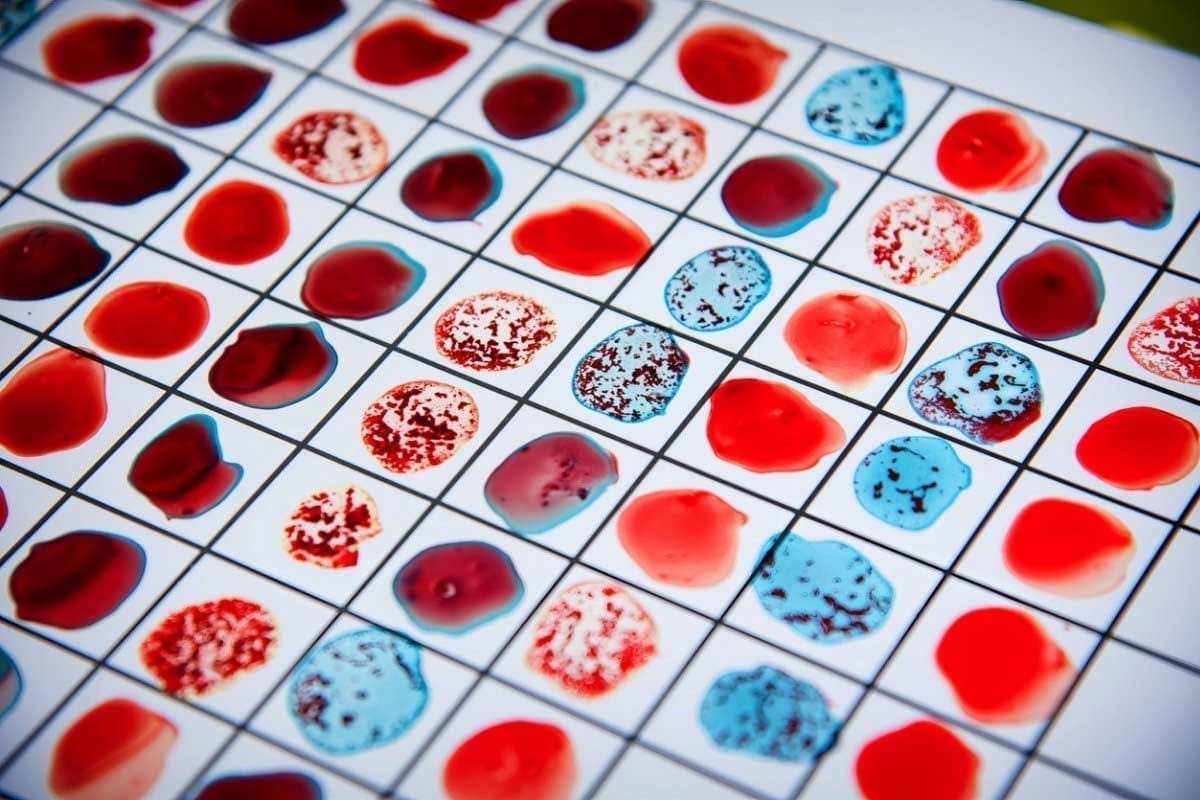Last Updated on November 26, 2025 by Bilal Hasdemir

Dealing with neck pain means looking at treatment options carefully. At Liv Hospital, we focus on our patients, giving them top-notch care. Cervical facet injections, or facet shots in the neck, are a key treatment for neck pain.Discover key facts about facet shots in neck before getting a cervical facet injection.
These injections aim at the facet joints in the neck to find or fix pain from these areas. Knowing about the procedure, its good points, and possible downsides helps patients make smart choices. We’ll share 7 important facts to know before getting a cervical facet injection.
Key Takeaways
- Cervical facet injections are used to diagnose or treat neck pain.
- The procedure involves injecting medication into the facet joints.
- Understanding the benefits and risks is key to making informed decisions.
- Liv Hospital offers patient-focused care with high standards.
- Knowing your treatment options is vital for effective care.
Understanding Cervical Facet Joints and Their Role in Neck Pain

The cervical spine’s facet joints are small but very important. They help us move our necks and keep the spine stable. These joints are between and behind the vertebrae in our neck.
Anatomy of Cervical Facet Joints
Cervical facet joints are special joints in our neck. They connect the vertebrae, allowing us to move our necks smoothly. They work with the intervertebral discs to help us move.
Research from the National Center for Biotechnology Information shows knowing about these joints is key. It helps doctors treat neck pain better.
How Facet Joints Contribute to Neck Pain
Facet joints can cause neck pain if they get hurt or inflamed. This can happen from injuries, wear and tear, or too much strain. When they’re affected, it can lead to neck pain and stiffness.
Inflammation and irritation of these joints can really hurt. It can make everyday activities hard and affect our quality of life.
Common Conditions Affecting Cervical Facet Joints
Several issues can affect the cervical facet joints. These include facet joint arthritis, whiplash, and degenerative disc disease. These problems can cause pain and make it hard to move.
It’s important to understand these conditions. Knowing how they affect the facet joints helps doctors find the right treatments. This might include cervical facet injections.
What Are Facet Shots in the Neck? Procedure Overview

Cervical facet injections, also known as facet shots in the neck, are used to find and treat neck pain. They help patients understand their pain and find relief.
Definition and Purpose of Cervical Facet Injections
Cervical facet injections put a mix of local anesthetic and steroid into the neck’s facet joints. The main goal is to cut down inflammation and ease pain. These shots are for both finding and fixing the pain’s cause.
Diagnostic vs. Therapeutic Injections
Diagnostic shots use a local anesthetic to numb the facet joints and find the pain’s source. If pain goes away, it shows the joints are the problem. Therapeutic shots use steroids to fight inflammation and give lasting pain relief.
Components of Facet Joint Injections
Facet joint injections have two main parts: a local anesthetic and a corticosteroid. The anesthetic gives quick pain relief for diagnosis. The steroid fights inflammation for longer pain relief.
| Component | Function | Effect |
| Local Anesthetic | Numb the facet joint area | Immediate pain relief, diagnostic |
| Corticosteroid | Reduce inflammation | Longer-term pain relief, therapeutic |
Knowing about facet shots in the neck helps patients choose their treatment wisely. We aim to give full care and advice every step of the way.
Key Fact #1: Conditions Treated with Cervical Facet Injections
We treat neck pain with cervical facet injections, helping patients feel better. These injections are great for managing pain from different cervical spine issues.
Facet Joint Arthritis
Facet joint arthritis affects the joints in the neck. Inflammation and degeneration cause neck pain and stiffness. Cervical facet injections can ease this pain by putting anti-inflammatory medicine right where it’s needed.
The mix of a local anesthetic and corticosteroid in the injections works well. The anesthetic gives quick pain relief, and the corticosteroid fights inflammation over time.
Whiplash and Trauma-Related Pain
Whiplash from car accidents strains the facet joints and soft tissues. Cervical facet injections are a good way to treat the chronic pain that can come after such injuries.
These injections target the specific joints hurt by trauma. They help reduce pain and improve movement.
Degenerative Disc Disease
Degenerative disc disease causes neck pain due to disc loss and stress on the facet joints. Cervical facet injections can help with the pain from these joints, even if the main problem is the discs.
This treatment is helpful when other methods haven’t worked well enough.
Key Fact #2: The Procedure Process Step-by-Step
Getting facet shots in the neck involves several important steps. These steps make sure the procedure is safe and works well. We’ll walk you through what happens before, during, and after the procedure.
Pre-Procedure Preparation
Before a cervical facet injection, patients get checked to see if they’re a good fit. This includes looking at their medical history, current meds, and allergies. We also tell patients to stop certain meds that might mess with the procedure or recovery.
On the day of the procedure, patients arrive early to fill out papers and get ready. They lie on their stomach on an X-ray table. The skin where the injection will go is cleaned and made ready.
Imaging Guidance Techniques
We use imaging to make sure the injection goes in right. Fluoroscopy or CT scans are the most common methods. These tools let us see the facet joints and guide the needle in real-time.
Fluoroscopy shows a live X-ray image, helping us place the needle accurately. CT scans give detailed images and are better for tricky cases.
Injection Administration
With the needle in place, we inject a local anesthetic to numb the area. Then, we put a corticosteroid or a mix of an anesthetic and a corticosteroid into the facet joint. The corticosteroid cuts down inflammation, and the anesthetic gives quick pain relief.
The whole procedure takes 15 to 30 minutes, depending on the case and how many joints are treated. After, patients are watched for a bit to see if they have any immediate issues.
| Procedure Step | Description | Duration |
| Pre-procedure preparation | Evaluation and preparation before the injection | 1-2 hours |
| Imaging guidance | Use of fluoroscopy or a CT scan to guide the needle | 10-15 minutes |
| Injection administration | Administration of an anesthetic and/or corticosteroid | 15-30 minutes |
Key Fact #3: Benefits and Effectiveness of Cervical Facet Blocks
Cervical facet blocks are a key treatment for neck pain. We’ll look at their benefits and how well they work. This includes their ability to ease pain, their role in diagnosis, and what affects their success.
Pain Relief Duration
Cervical facet blocks offer significant pain relief. How long this relief lasts varies. Some people feel better for months, while others may not see relief for as long.
The time pain relief lasts depends on several things. These include how bad the pain is, how well the injection was done, and how the person reacts to it.
Diagnostic Value
Cervical facet blocks also have a lot of diagnostic value. They numb the facet joints, helping figure out if they’re causing pain. This is key in deciding what treatment to use next.
If the block makes pain better, it shows the facet joints are likely the problem.
Success Rates and Factors Affecting Outcomes
The success rates of cervical facet blocks vary. This depends on the patient’s condition, the injection method, and the doctor’s skill. Research shows they can be very effective in diagnosing and treating neck pain.
Things that can change how well the block works include other health issues, how bad the facet joints are, and following the doctor’s advice after the procedure.
Using a detailed approach, like choosing the right patients and doing the procedure carefully, makes cervical facet blocks more effective. This helps doctors give better advice to patients about what to expect.
Key Fact #4: Possible Side Effects and Complications
Cervical facet injections are usually safe, but it’s important to know about possible side effects and complications. Knowing this helps patients make better choices about their health.
Common Cervical Facet Injections Side Effects
Most people get some side effects from cervical facet injections. These are usually mild and short-lived. Common side effects include:
- Temporary soreness or pain at the injection site
- Bruising or swelling around the injection area
- Headaches
- Dizziness or lightheadedness
These side effects usually go away in a few days. Applying ice to the affected area and taking over-the-counter pain relievers can help alleviate discomfort.
Rare but Serious Complications
Even though rare, serious complications can happen with cervical facet injections. These may include:
- Infection at the injection site
- Nerve damage or irritation, potentially causing numbness, tingling, or weakness.
- Allergic reactions to the medications used
- Spinal cord injury
It’s essential to recognize the signs of serious complications, such as severe pain, fever, or difficulty moving, and seek immediate medical attention if they occur.
Risk Factors to Consider
Some factors can make side effects or complications more likely from cervical facet injections. These include:
- Pre-existing medical conditions, such as diabetes or bleeding disorders
- Medications that may interact with the injected substances
- Previous adverse reactions to similar procedures
Discussing your medical history thoroughly with your healthcare provider before undergoing cervical facet injections is important for minimizing risks.
By knowing about possible side effects and complications, and the factors that can affect risk, patients can make better choices about their treatment.
Key Fact #5: Recovery and Aftercare Following Neck Facet Joint Injections
The recovery and aftercare phase after neck facet joint injections is key to success. We aim to help you manage your recovery well.
Immediate Post-Procedure Care
After the procedure, stay in the clinic for a short time to watch for any immediate reactions. When you go home, make sure someone is with you. You might feel drowsy or numb because of the local anesthetic.
Immediate care tips:
- Rest for the rest of the day
- Avoid driving or operating heavy machinery for at least 24 hours
- Use ice packs on the injection site if it hurts
Activity Restrictions
Resting right after the procedure is important, but you don’t need to stay in bed all day. We suggest a balanced approach to activity:
- Avoid heavy lifting, bending, or strenuous activities for 2-3 days
- Start doing normal activities when you feel comfortable
- Keep up with any physical therapy or exercises you’re doing
When to Contact Your Doctor
Complications from neck facet joint injections are rare, but it’s good to know when to call your doctor. Contact us if you notice:
- More pain or swelling at the injection site
- Fever or chills
- Numbness, tingling, or weakness in your arms or legs
- Any other symptoms that worry you
By following these tips and keeping in touch with your healthcare provider, you can recover well. This will help you get the best results from your neck facet joint injections.
Key Fact #6: Who Should Consider (or Avoid) Cervical Facet Injections
Not everyone with neck pain is right for cervical facet injections. It’s important to choose carefully. The decision to get this treatment depends on many things. These include the patient’s health history, current health, and why they have neck pain.
Ideal Candidates
Some people are better suited for cervical facet injections. These include those with:
- Chronic neck pain from facet joint arthritis or wear and tear
- Pain from whiplash or other injuries
- Degenerative disc disease that irritates the facet joints
These patients often haven’t gotten better with treatments like physical therapy, medicine, or chiropractic care.
Table: Ideal Candidates for Cervical Facet Injections
| Condition | Description | Benefits of Injections |
| Facet Joint Arthritis | Inflammation and degeneration of facet joints | Reduced inflammation and pain relief |
| Whiplash or Trauma | Neck pain following a sudden, forceful movement | Targeted pain relief for injured areas |
| Degenerative Disc Disease | Disc deterioration leading to facet joint irritation | Relief from pain caused by disc degeneration |
Contraindications
There are times when cervical facet injections are not a good idea. These include:
- Active infection or significant inflammation at the injection site
- Bleeding disorders or anticoagulant therapy that cannot be safely paused
- Known allergy to the medications used in the injections
We suggest other treatments for patients with these conditions.
“The safety and efficacy of cervical facet injections depend on careful patient selection and meticulous technique.”
— Expert in Pain Management
Pre-Existing Conditions to Disclose
Before getting cervical facet injections, it’s key to tell us about any health issues. This includes:
- Diabetes, as a corticosteroid, can affect blood sugar levels
- Previous adverse reactions to local anesthetics or corticosteroids
- Any condition that may affect the immune system or the healing process
Telling us about these conditions helps us prepare and tailor the treatment.
In conclusion, cervical facet injections are a good option for many with neck pain. But we must carefully decide who is right for it. Knowing who is best suited, who should avoid it, and what health issues to share helps us provide safe and effective care.
Key Fact #7: Alternative Treatments to Facet Injections in the Neck
We know facet injections aren’t for everyone. It’s important to talk about other options. Facet injections help with neck pain, but there are other ways to manage it, too.
Conservative Treatment Options
First, we try conservative treatments for neck pain. These include:
- Physical therapy to improve the range of motion and strengthen neck muscles
- Chiropractic care to realign the spine and relieve pressure on facet joints
- Medications such as NSAIDs or muscle relaxants to manage pain and inflammation
- Lifestyle modifications, including posture correction and stress management
These methods can help manage neck pain. They might be used along with other treatments.
Other Interventional Procedures
For more severe cases, other procedures are considered. These include:
- Radiofrequency ablation: A procedure that uses heat to disable the nerves causing pain
- Medial branch blocks: Diagnostic injections to identify the source of pain
- Trigger point injections: Injections into specific areas of muscle tension
These procedures can help those who haven’t gotten better with other treatments or facet injections.
Surgical Alternatives
In some cases, surgery is needed to fix the root cause of neck pain. Surgical options include:
| Surgical Procedure | Description |
| Spinal fusion | A procedure that joins two or more vertebrae together to stabilize the spine |
| Artificial disc replacement | A surgery that replaces a damaged disc with an artificial one |
| Foraminotomy | A procedure that relieves pressure on nerves by enlarging the openings through which they pass |
Considering surgery should be a last resort. Always talk to a healthcare professional first.
Conclusion: Making an Informed Decision About Cervical Facet Injections
When we talk about cervical facet injections, it’s key to make a smart choice. We’ve looked into how these injections work, what they treat, and their possible effects. This helps patients understand if these injections are right for them.
Patients need to know all about the procedure and its outcomes. This includes what it treats, how it’s done, and any side effects. Knowing this helps them decide if it’s the best choice for their neck pain.
We suggest talking to a healthcare provider about your specific situation. They can help figure out if cervical facet injections are a good fit. This step can lead to better pain management and a better life.
FAQ
What are facet shots in the neck?
Facet shots in the neck, also known as cervical facet injections, are a medical procedure. A local anesthetic and/or corticosteroid is injected into the facet joints in the neck. This is to diagnose or treat neck pain.
What are cervical facet joints?
Cervical facet joints are small joints in the neck. They connect the vertebrae and allow for flexibility and movement. When inflamed or irritated, they can cause neck pain.
What conditions are treated with cervical facet injections?
Cervical facet injections treat various conditions. These include facet joint arthritis, whiplash, and degenerative disc disease. These can cause neck pain and stiffness.
How is the facet shots in neck procedure performed?
The procedure uses imaging guidance, like fluoroscopy or ultrasound. It injects a local anesthetic and/or corticosteroid into the facet joints in the neck.
What are the benefits of cervical facet blocks?
Cervical facet blocks can provide pain relief. They help diagnose the source of neck pain. They are also a minimally invasive alternative to surgery.
What are the potential side effects of cervical facet injections?
Common side effects include temporary pain or discomfort at the injection site. Rare but serious complications include infection, nerve damage, or allergic reactions.
How long does pain relief from cervical facet injections last?
Pain relief duration varies. It depends on the individual and the condition being treated. Relief can last from several weeks to several months.
Who is a good candidate for cervical facet injections?
Ideal candidates have neck pain caused by facet joint arthritis, whiplash, or degenerative disc disease. They should not have responded to conservative treatments.
Are there alternative treatments to facet injections in the neck?
Yes, there are alternatives. These include conservative options like physical therapy and medication. Other interventional procedures like radiofrequency ablation and surgical alternatives are also options.
What should I expect during recovery from neck facet joint injections?
Patients are monitored for a short period after the procedure. They may experience some soreness or discomfort. This can be managed with rest and pain medication.
Can I continue my normal activities after cervical facet injections?
It’s recommended to avoid strenuous activities for a short period after the procedure. Most patients can resume their normal activities within a few days.
Reference:
National Center for Biotechnology Information (NCBI) – PMC. (2018). Efficacy of cervical facet joint injections and medial branch blocks in chronic neck pain: Evidence-based review. Journal of Pain Research, 11, 2803–2813.https://pmc.ncbi.nlm.nih.gov/articles/PMC6222531






